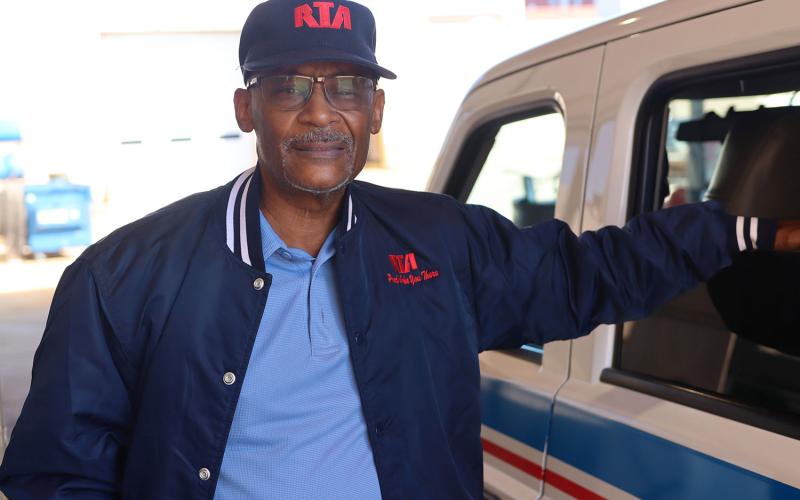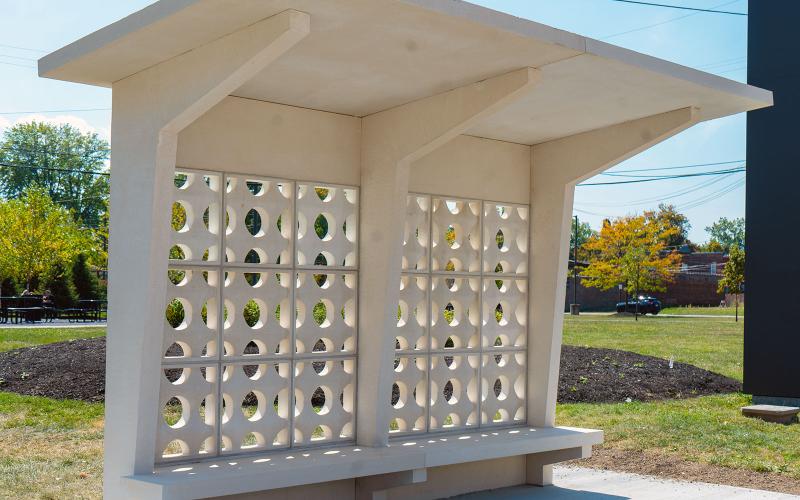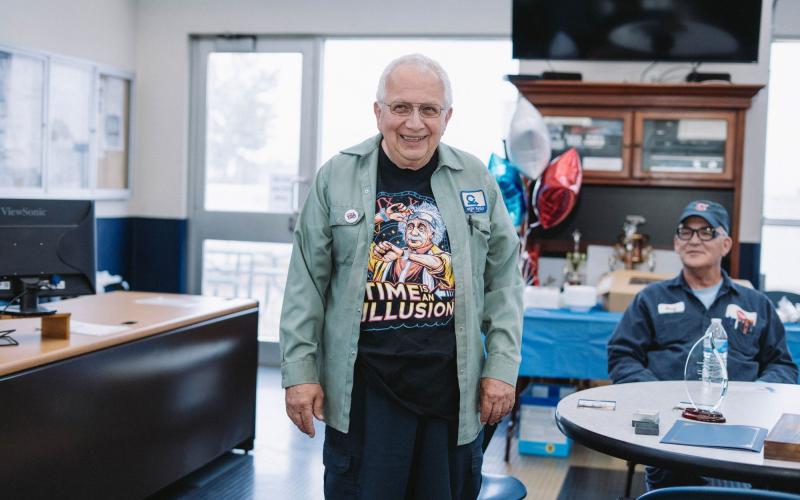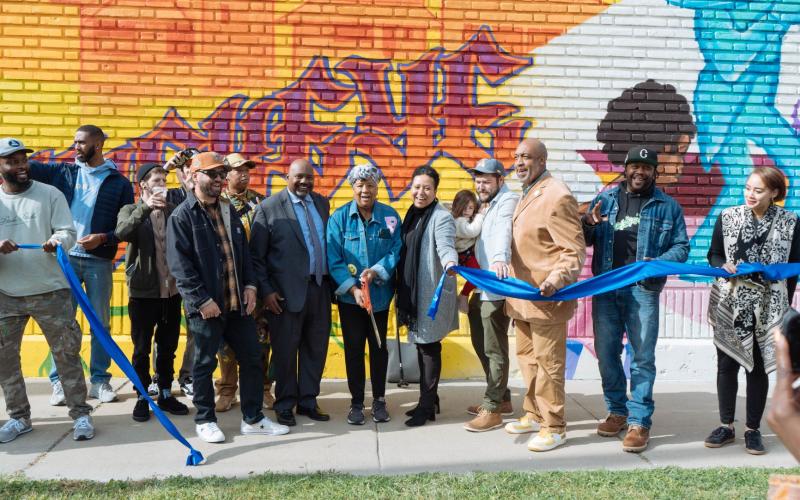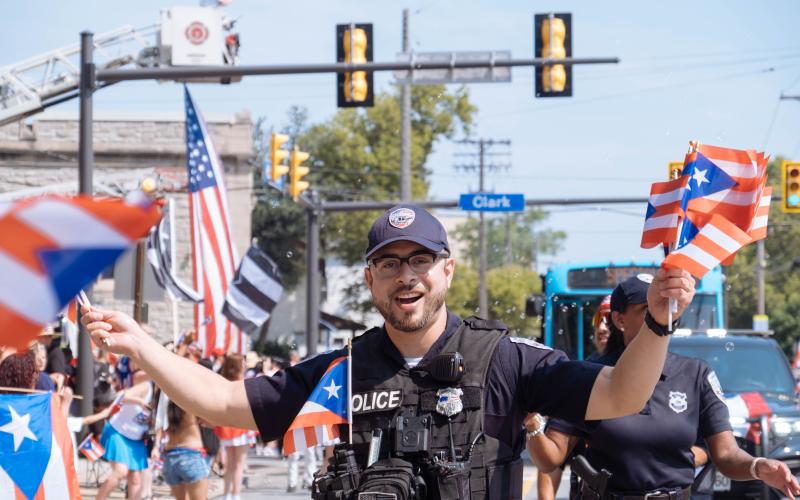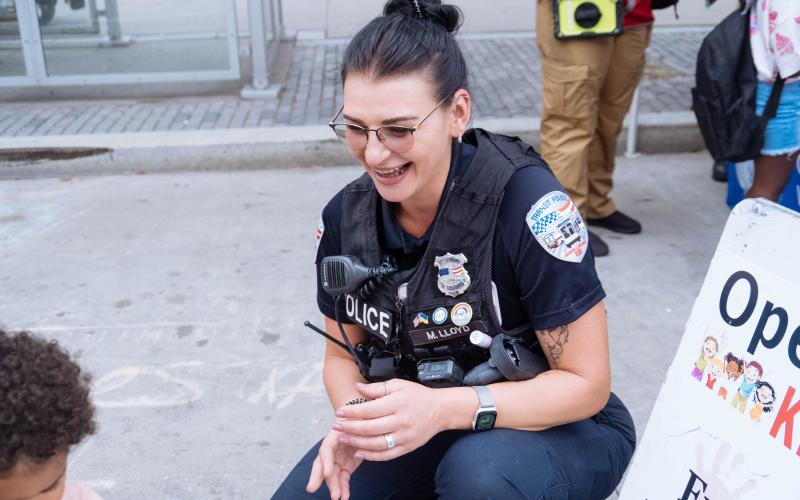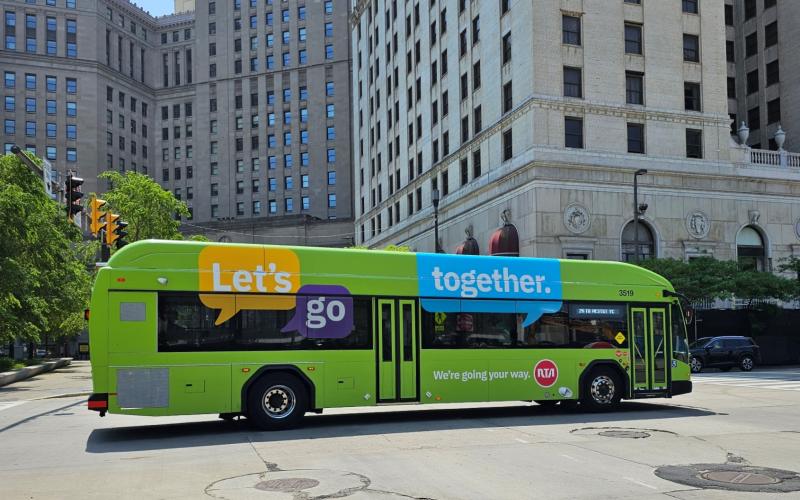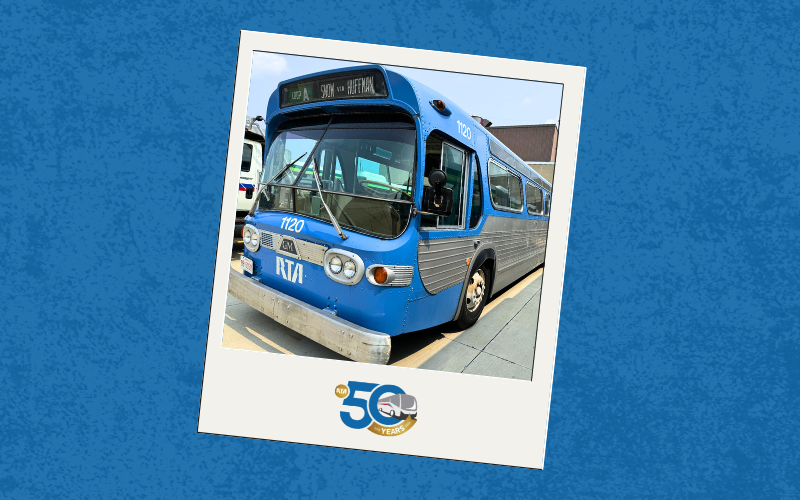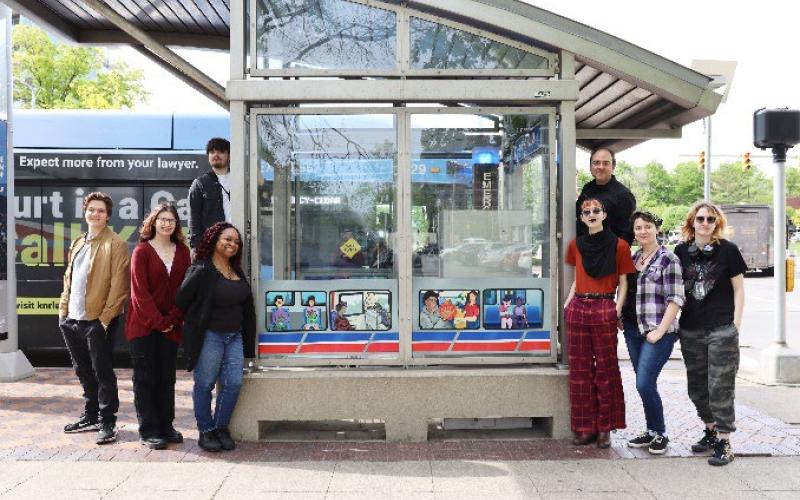Aug 5, 2021
From August 8th through October 2nd, GCRTA and RailWorks Track Services Inc. will be replacing the track structure on the Blue and Green lines from Buckeye-Woodhill station to Shaker Square. This section of track was last rehabbed in the early 1980’s. The Blue and Green lines, GCRTA’s light rail options, will be suspended during this time and replaced with 67R buses.
A major portion of the suspension will be spent on replacing crossovers near Buckeye-Woodhill, East 116th, and Shaker Square stations. Crossovers—sections of rail where trains can transfer to a parallel track—are made up of two turnouts. The project calls for almost 7,000 crossties, over 50,000 cut spikes, and 27,000 feet of rail!
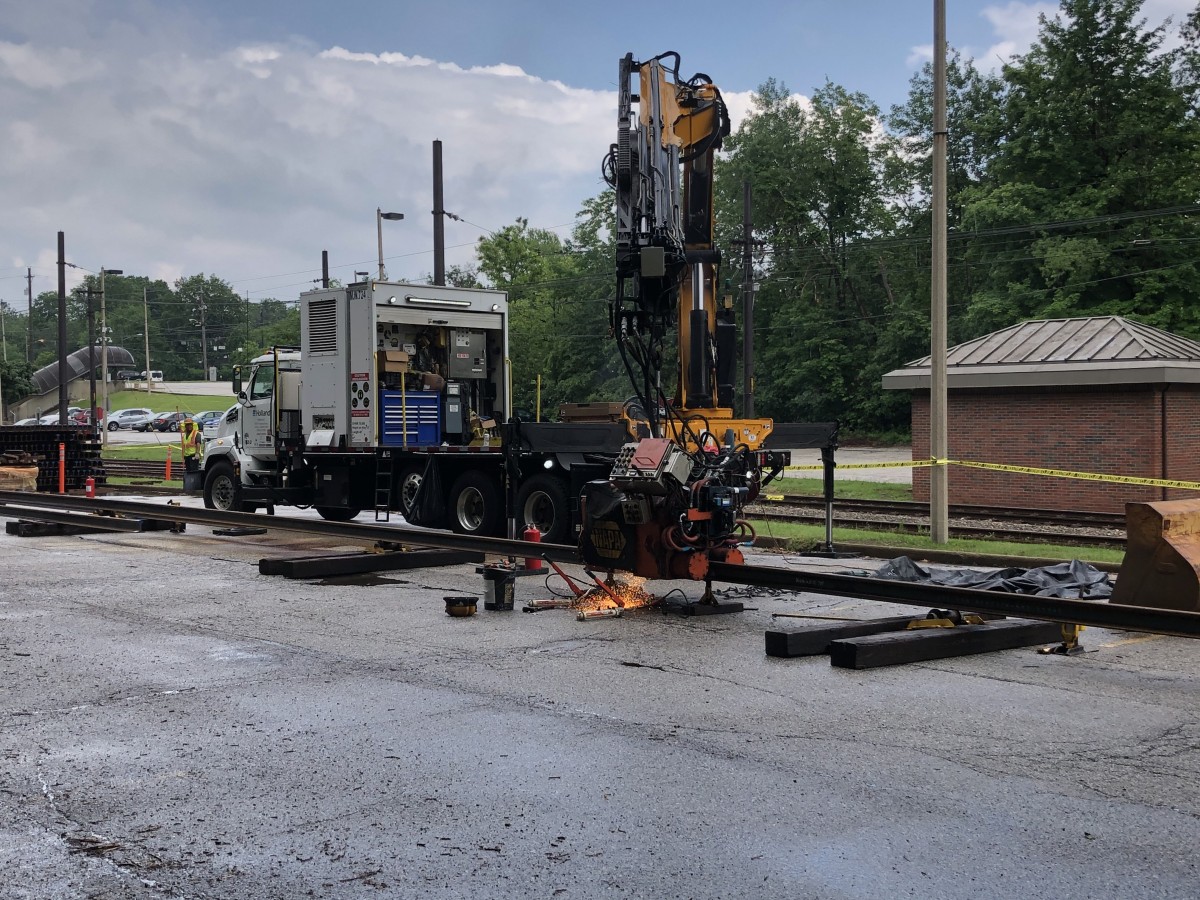
Flash-butt welding truck joining rail on Green Road – flash-butt welding is an electrical resistance welding process used to join large sections of rail together
A lot of work will be done before the August 8th outage even begins. Prep work will include welding 80-foot pieces of rail into 640-foot beams outside the work zone. This allows workers to save time by working while the rail is still in service. Existing rail and ties will begin to be removed at the beginning of the outage, and will continue for about two weeks. For next two weeks, the installation of new rail and crossties will occur, followed by two weeks of work installing the crossovers. Finally, the last two weeks will be spent on final track adjustments, overhead line repairs, and signal testing. During the rail shutdown, GCRTA will utilize the service suspension to repave the parking lot at Buckeye-Woodhill.
Progress Rail, a Cleveland-based manufacturer of the crossovers for this project, have a long history in Cleveland. Previously known as Cleveland Track Material, the company with nearly century old roots manufactures special trackwork for freight railroads and transit agencies all over North America.
Although Progress Rail has been the manufacturer behind much of GCRTA’s special track over the years, the process must go through a competitive bid selection process. Progress Rail and other rail companies have to compete to earn the Authority’s business for these projects.

GCRTA Engineering, RailWorks, and Progress Rail inspecting the new East 116th Street Crossover
Much of the assembly happens before the tracks are even placed. The crossovers are built and assembled in the shop to allow for inspection and acceptance to eliminate any issues occurring during the shutdown. Once the crossovers have been accepted, they are disassembled for transport. Sections are then placed onto trucks and shipped from Progress Rail’s Bessemer Avenue location to the work zone. Field installation will be completed by RailWorks Track Services Inc., a construction contractor that has completed several projects for GCRTA in the past.
Rail projects like this one require a variety of equipment. Basic construction equipment such as excavators, skid steers, and dump trucks are a must. However, specialized equipment is just as crucial to any rail project. Because access to the track itself will be difficult, a welding truck will be on site to help weld together large sections of rail together before they’re placed. In addition, on-track rail equipment such as a tamper to stabilize the track at its final alignment and profile and a ballast regulator to shape the slopes and clear off any ballast from the ties and rail. Before the project begins, the contractor will unload their equipment at RTA’s East 55th Street Yard and a GCRTA pilot will move the rail equipment to the work site.


Photos of a ballast tamper and ballast regulator at work
Large projects like this one present many challenges. For riders, there will be no Blue or Green line rail service from August 8th through October 2nd. Instead, they will need to take the 67R buses at the designated bus stops near the existing rail lines. These buses will follow a modified alignment in order to accommodate riders on both the Blue and Green Lines.
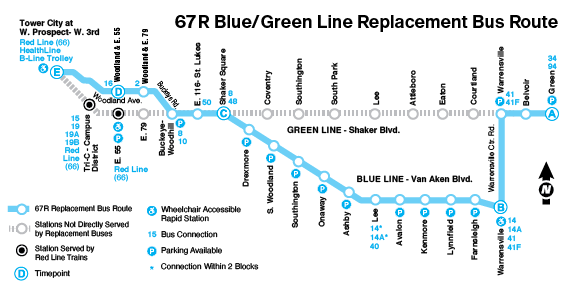
The maintenance crew has a lot of work to do on top of this project. Because the Blue and Green lines will be out of service, GCRTA Power and Way and Engineering crews can utilize the shutdown period to perform other necessary maintenance requirements such as crosstie replacements, signal work, overhead catenary repairs, and bridge inspections.
The benefits will certainly outweigh the costs associated with this project. After the needed track replacements, riders can expect a smoother ride, in addition to less interruptions in service. The project will help make sure that GCRTA’s Green and Blue lines remain safe for passengers and operators. Passengers can enjoy increased reliability and the reassurance knowing aging sections of rail have been revived.
The future of RTA’s rail system will be busy behind the scenes, as we continue to maintain and replace our aging infrastructure. GCRTA is looking forward to a new fleet of rail cars, coming in the next few years. For more information on that project, please visit www.rideRTA.com/majorprojects.
